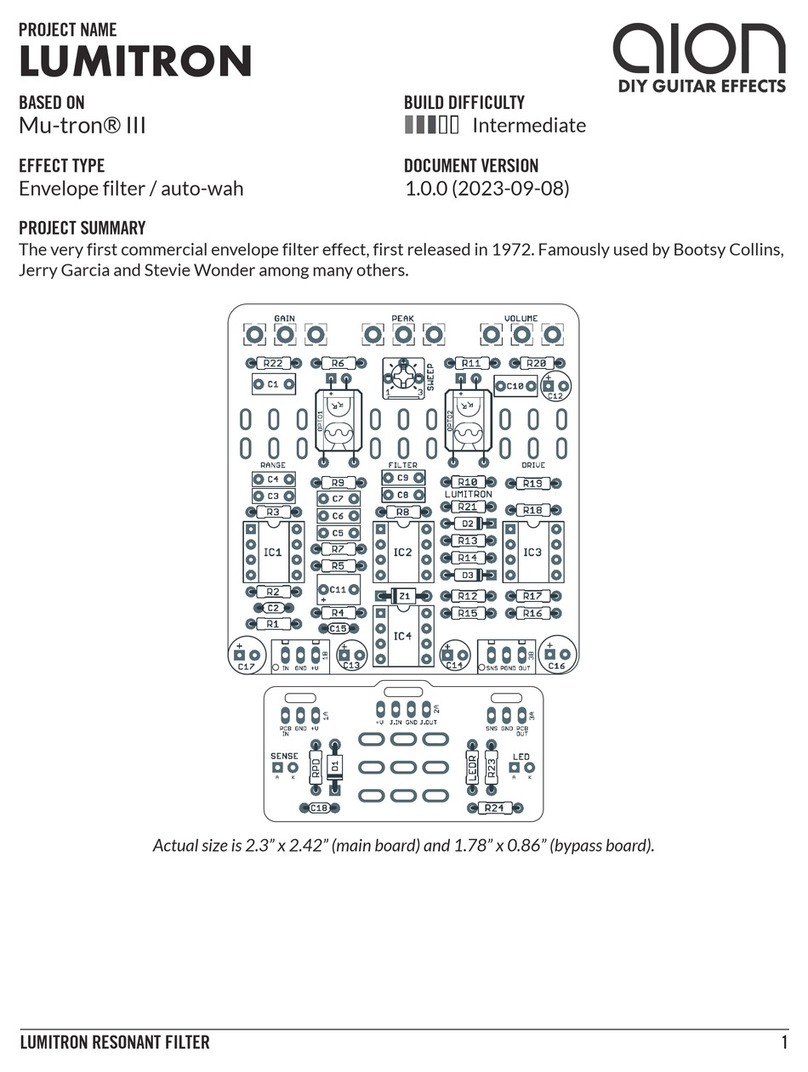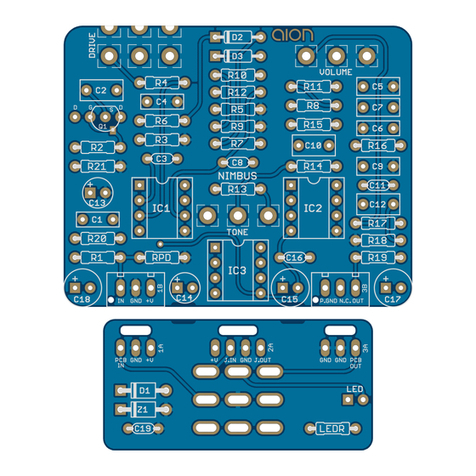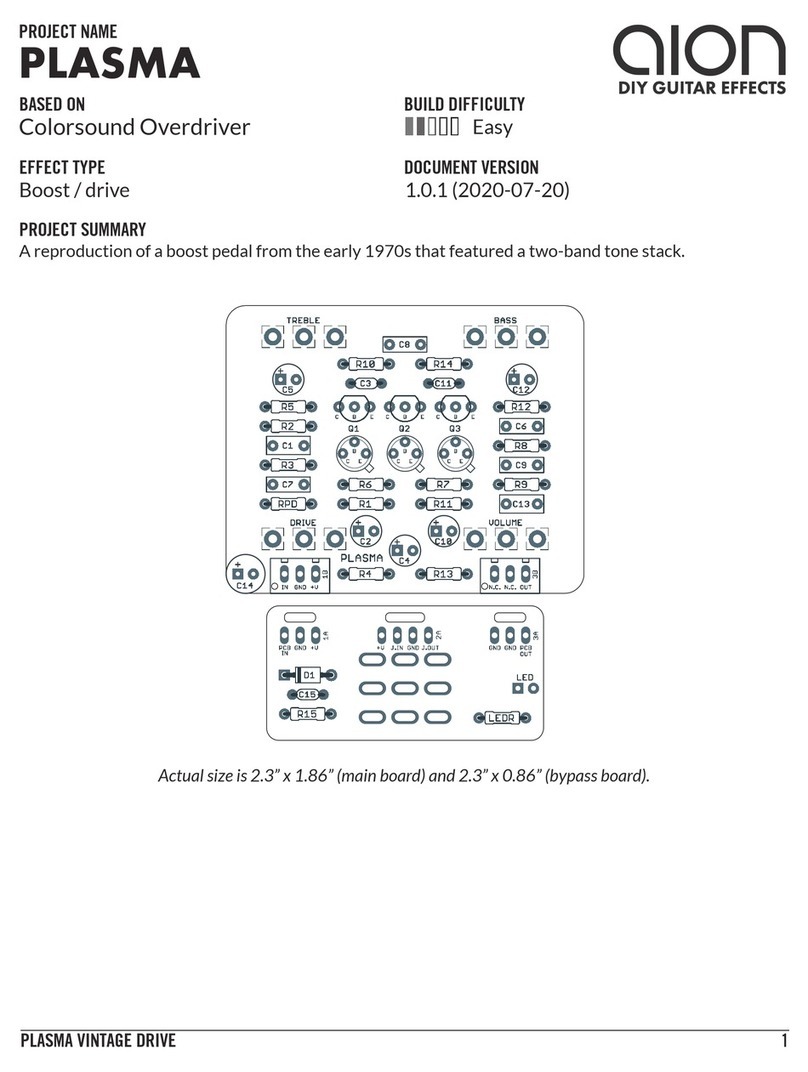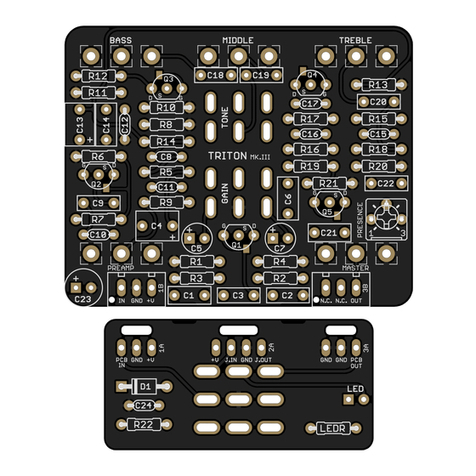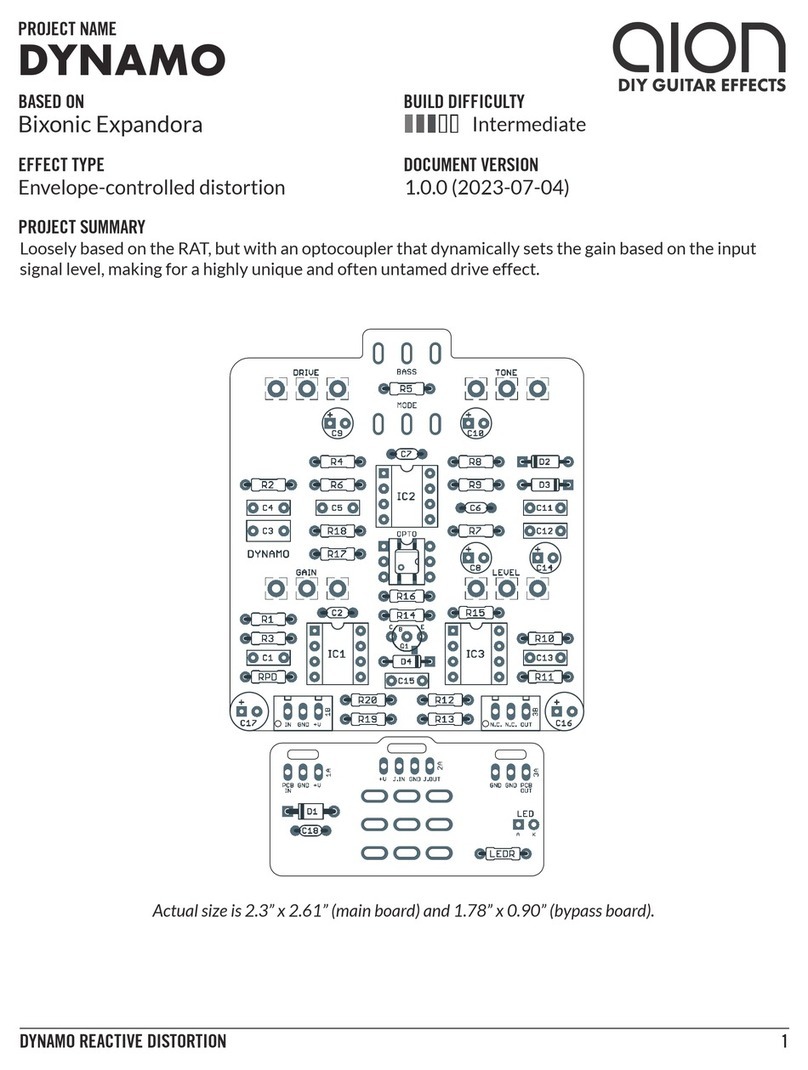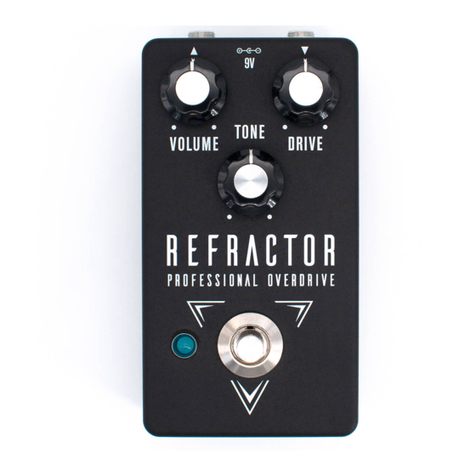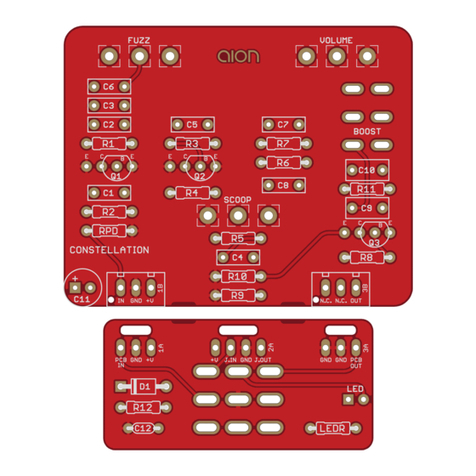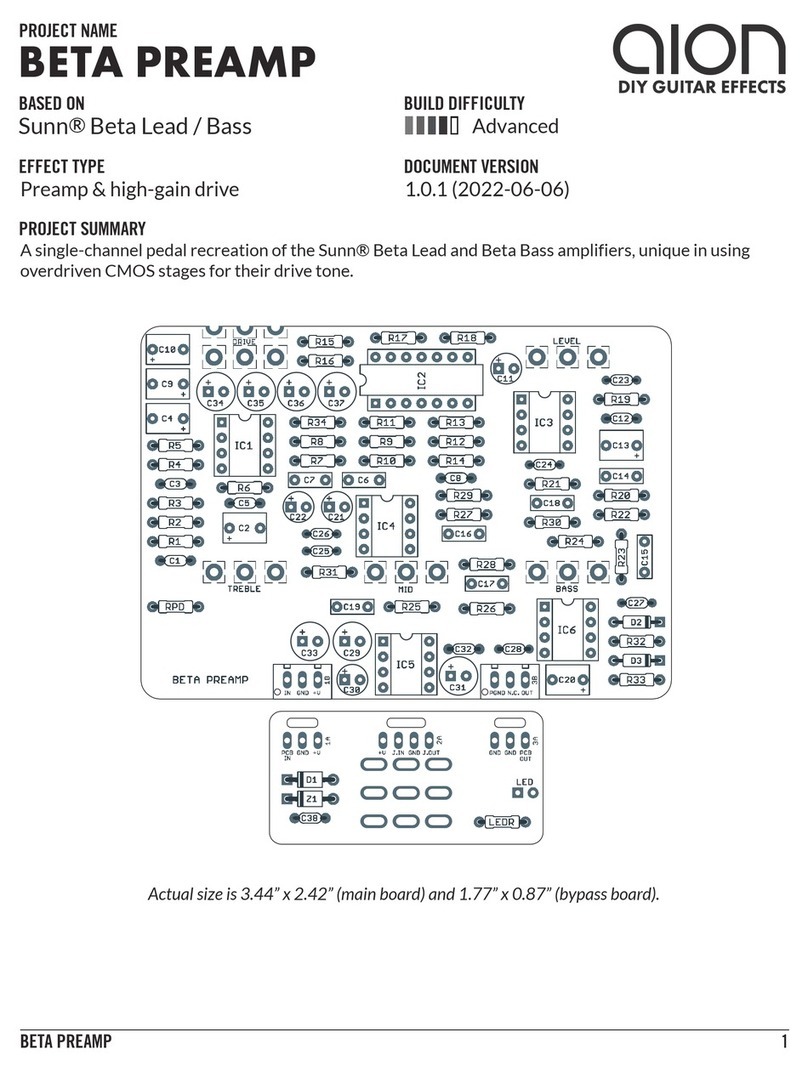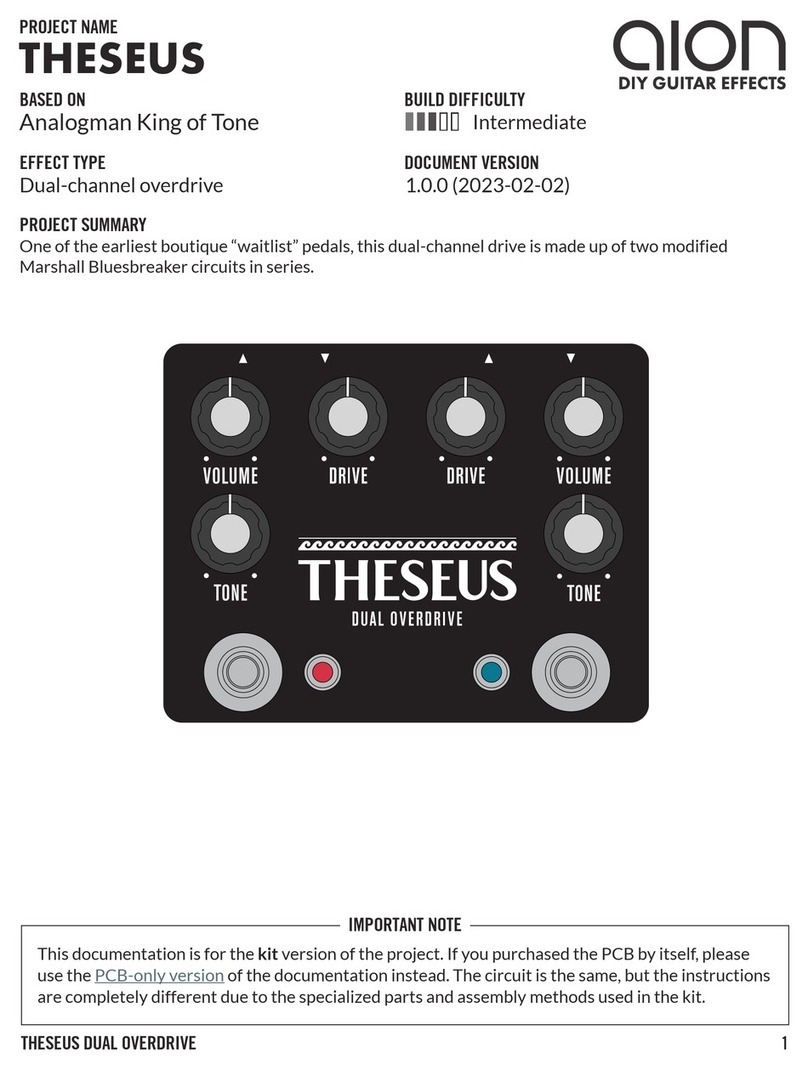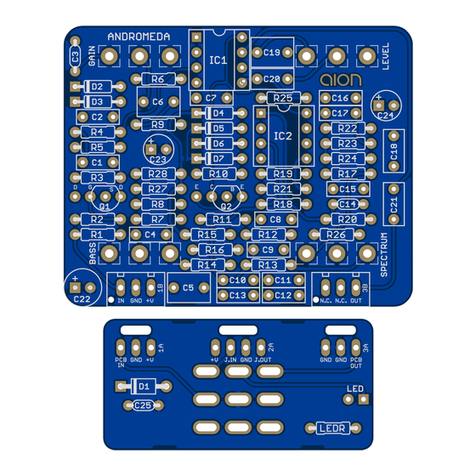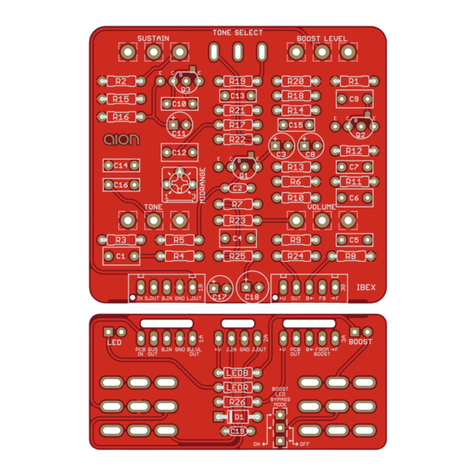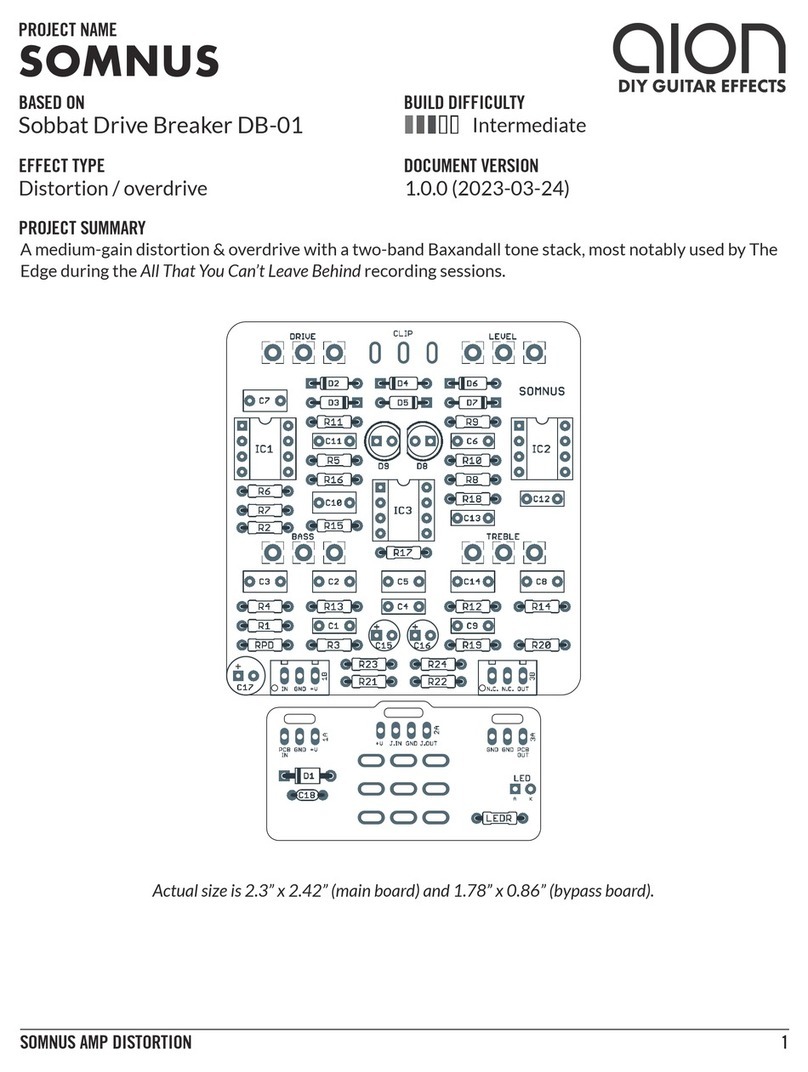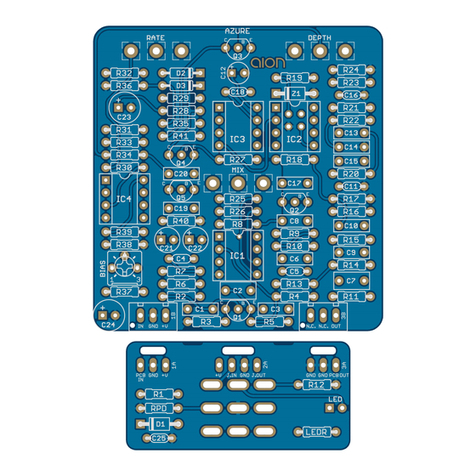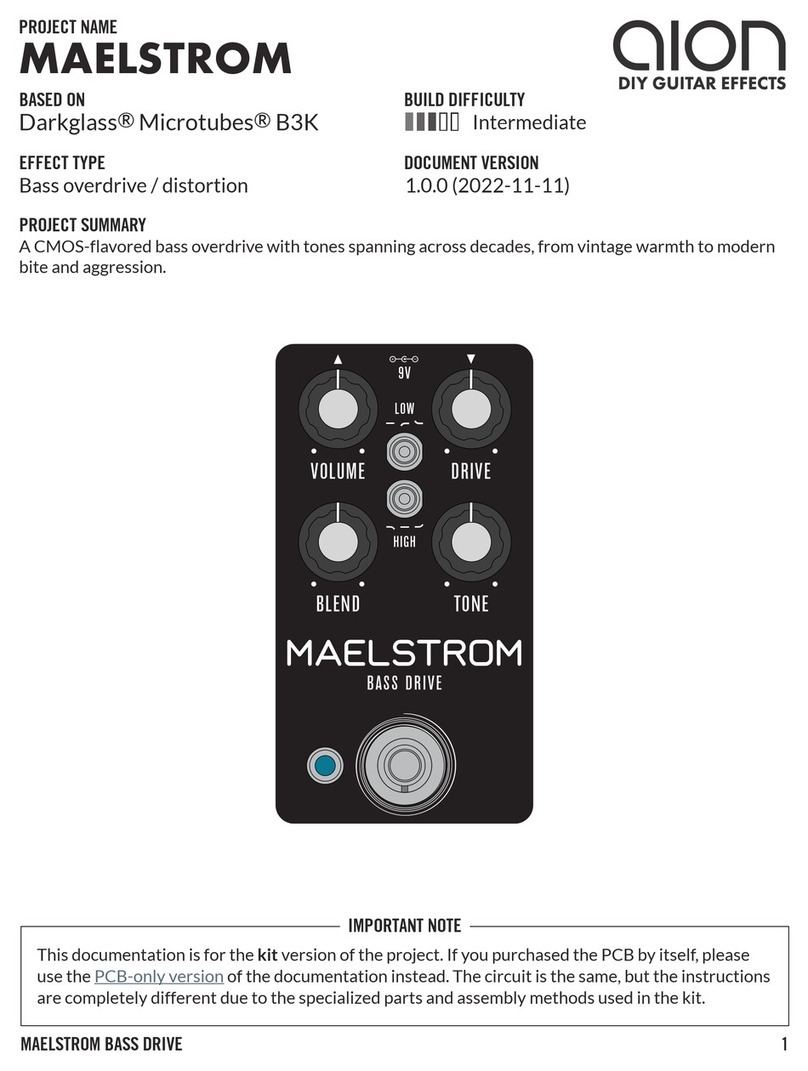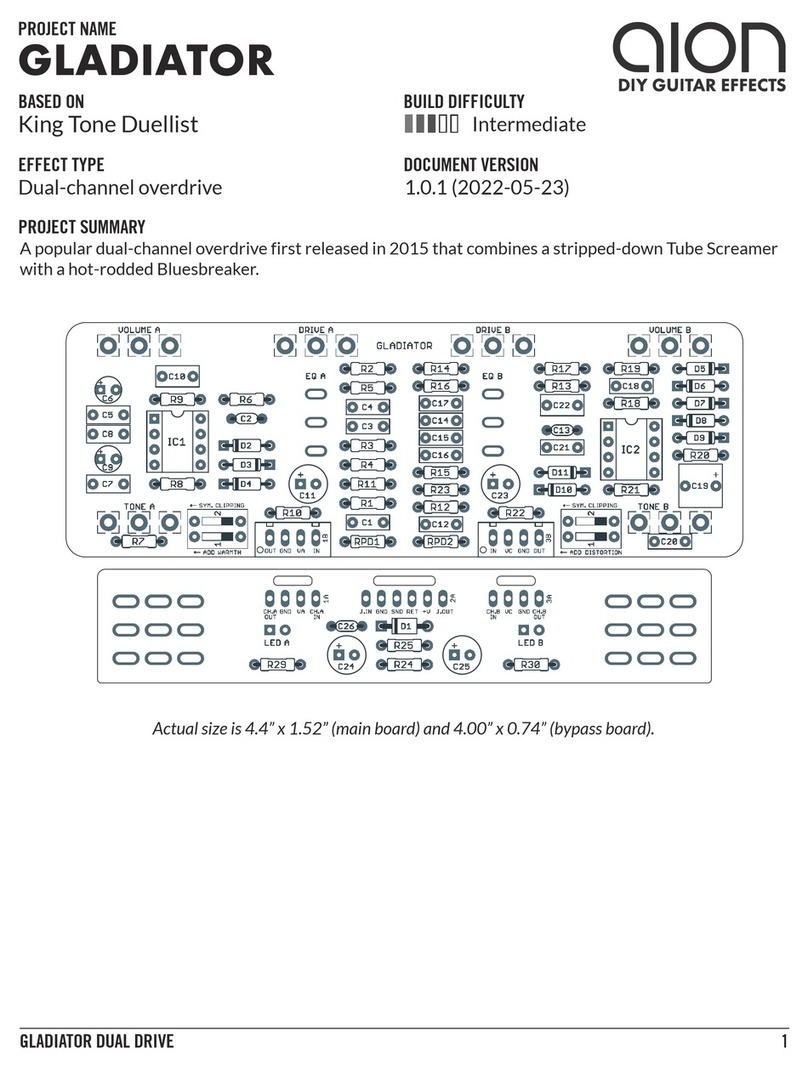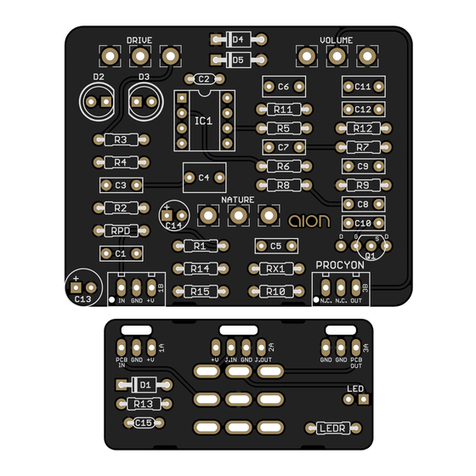
AURUM AMP OVERDRIVE 4
PARTS LIST, CONT.
PART VALUE TYPE NOTES
R33 4k7 Metal film resistor, 1/4W
R34 4k7 Metal film resistor, 1/4W
R35 4k7 Metal film resistor, 1/4W
R36 10k Metal film resistor, 1/4W Use 16k for original OD-2.
R37 10k Metal film resistor, 1/4W Use 14k for original OD-2.
RPD 2M2 Metal film resistor, 1/4W Input pulldown resistor. Can be as low as 1M.
LEDR 4k7 Metal film resistor, 1/4W LED current-limiting resistor. Adjust value to change LED brightness.
C1 22n Film capacitor, 7.2 x 2.5mm
C2 18n Film capacitor, 7.2 x 2.5mm
C3 100n Film capacitor, 7.2 x 2.5mm
C4 100pF MLCC capacitor, NP0/C0G
C5 22n Film capacitor, 7.2 x 2.5mm
C6 6n8 Film capacitor, 7.2 x 2.5mm
C7 10n Film capacitor, 7.2 x 2.5mm
C8 150n Film capacitor, 7.2 x 2.5mm
C9 100pF MLCC capacitor, NP0/C0G
C10 10n Film capacitor, 7.2 x 2.5mm
C11 18n Film capacitor, 7.2 x 2.5mm
C12 27n Film capacitor, 7.2 x 2.5mm Original OD-2 uses 22n. See build notes.
C13 1uF Film capacitor, 7.2 x 3.5mm
C14 10uF Electrolytic capacitor, 5mm
C15 1uF Film capacitor, 7.2 x 3.5mm
C16 22n Film capacitor, 7.2 x 2.5mm
C17 1uF Film capacitor, 7.2 x 3.5mm
C18 10uF Electrolytic capacitor, 5mm Power supply filter capacitor.
C19 100uF Electrolytic capacitor, 6.3mm Power supply filter capacitor.
C20 47uF Electrolytic capacitor, 5mm Reference voltage filter capacitor.
C21 10uF Electrolytic capacitor, 5mm Power supply filter capacitor.
C22 10uF Electrolytic capacitor, 5mm Power supply filter capacitor.
C23 47uF Electrolytic capacitor, 5mm Reference voltage filter capacitor.
C24 100uF Electrolytic capacitor, 6.3mm Power supply filter capacitor.
C25 100n MLCC capacitor, X7R Power supply filter capacitor.
Z1 1N4738A Zener diode, 8.2V, DO-41 Original OD-2 uses 6.2V zener, e.g. 1N4735A. See build notes.
D1 1N5817 Schottky diode, DO-41
Q1 2SK209-GR JFET, N-channel, SOT-23 Both originals use 2SK117-GR. 2SK209-GR is the SMD equivalent.
Q2 2SK209-GR JFET, N-channel, SOT-23 Both originals use 2SK117-GR. 2SK209-GR is the SMD equivalent.
Q3 2SK209-GR JFET, N-channel, SOT-23 Both originals use 2SK117-GR. 2SK209-GR is the SMD equivalent.
